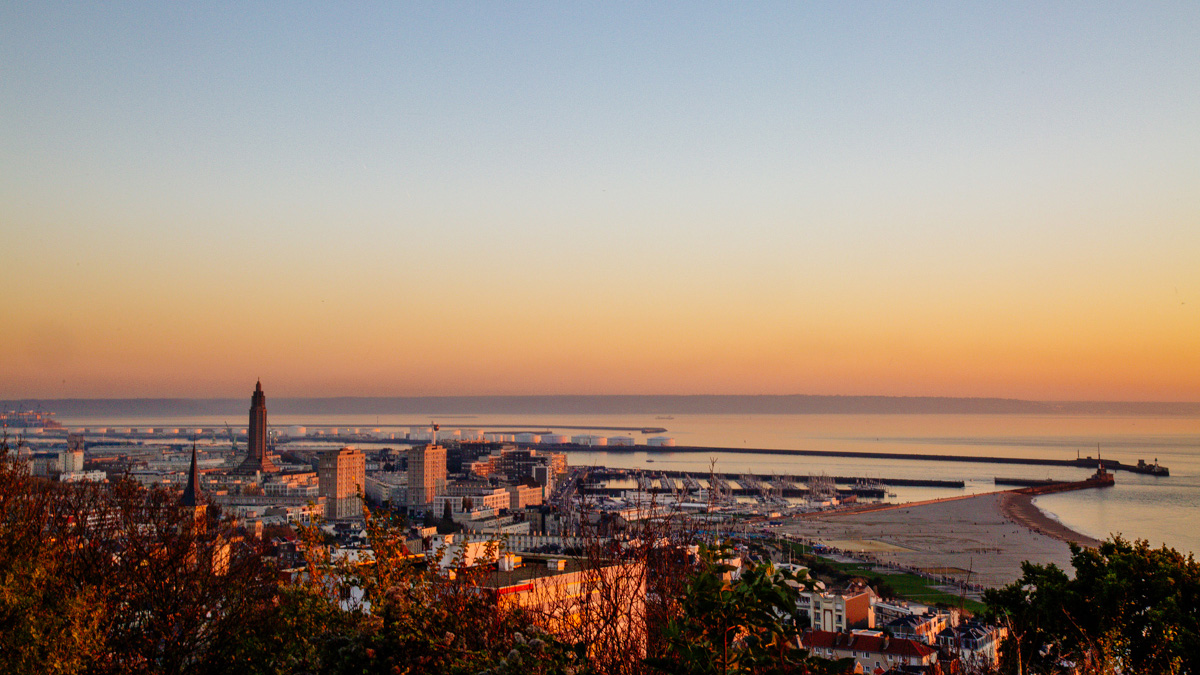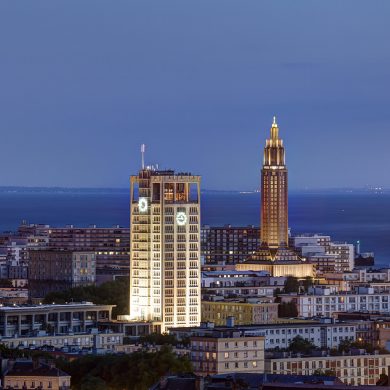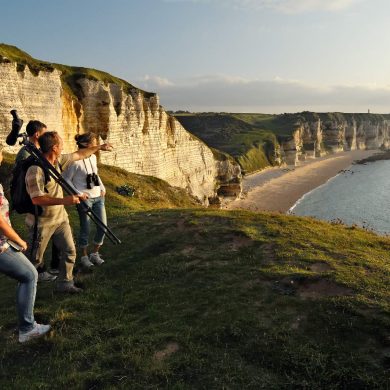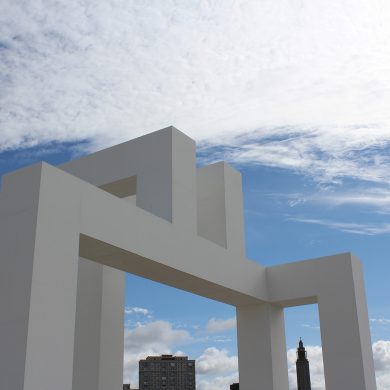Updated on 1 February 2021
Reading time: 5 minutes
We decided to explore Normandy in a completely new way, with a weekend in the seaside city of Le Havre, Normandy’s largest city, France’s second port, architectural gem and birthplace of Impressionism.
Perret’s unique architecture
Le Havre left us with so many happy memories. Its architecture and layout you won’t find anywhere else! The reason? Between 5 and 11 September 1944 a succession of Allied bombing raids destroyed 82% of the city; it was the most destroyed city in France. The reconstruction of Le Havre was conferred upon Auguste Perret, the ‘King of Concrete’. He pioneered the use of reinforced concrete and we wanted to find out more about his architecture and achievement: we were not disappointed.
The use of reinforced concrete helped to create a unified, if somewhat spare, style, while the cheapness and strength of the material recommended it to the government of the day. Perret had been using it since before the First World War, but it was the scale of his vision deployed in an entirely rebuilt city that captured his imagination.
Perret’s style is devoid of ornament of any kind, the straight boulevards afford long perspectives and broad pavements assure the airy passage of pedestrians alongside space for the motor-car. The buildings let in light and offer fine views across town. Each apartment would have a balcony, central heating and a bathroom! Revolutionary in its day!
Take the town hall for example. If you look up in advance the few open days that take place every year, you can look down on Le Havre from the 17th floor of the Town Hall and enjoy wonderful panoramic views of Perret’s city from 70m up!

city centre
We decided to take a guided tour of the city centre and she explained to us some of the technical details of how reinforced concrete works in certain buildings. In the Avenue Foch for example the buildings were constructed with widely spaced concrete beams with concrete slabs between them. This kind of ingenious use of the material gave Le Havre all its originality.
The Porte Océane
At the end of the Avenue Foch, the Porte Océane (‘ocean door’) opens up before us. Two great towers separate the town from the sea and were designed to shelter the town from the wind off the sea. Pretty clever, was our Auguste Perret!
PERRET’s Ingenious architecture gives the city its own identity
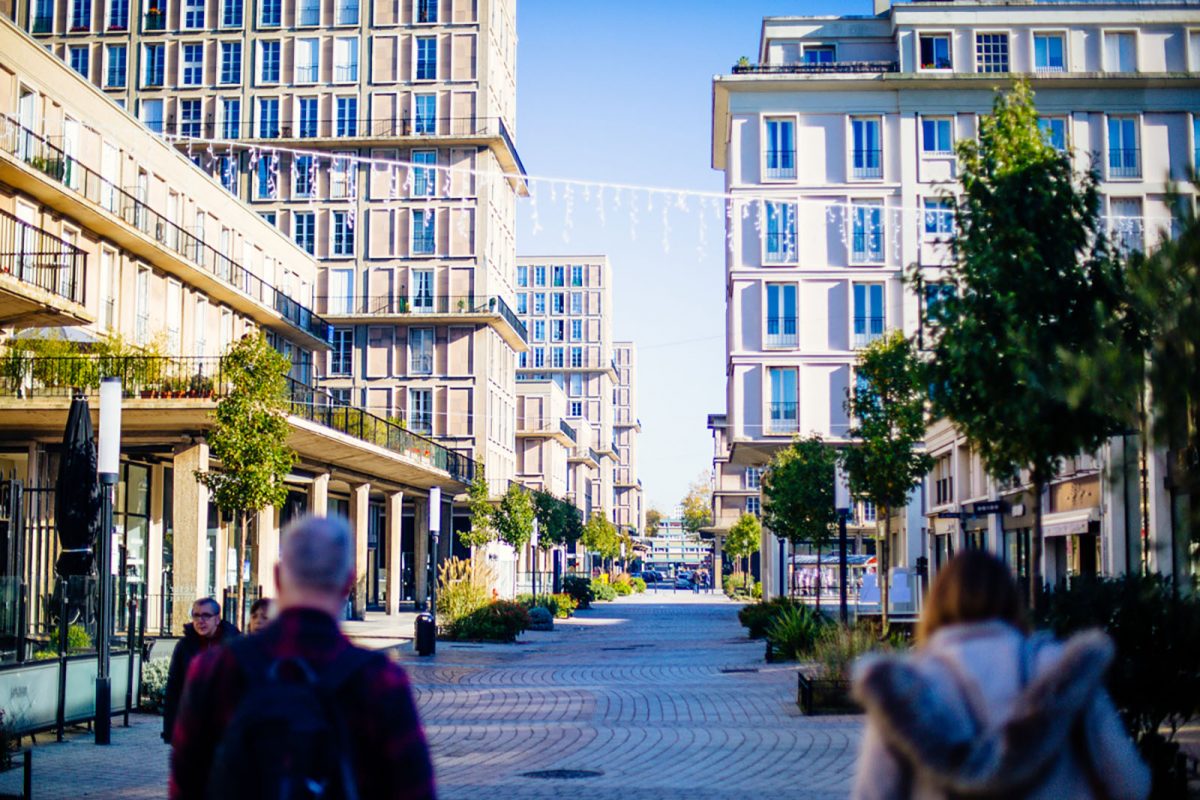
Unmissable places to visit
Sailors approaching Le Havre would not be looking out for a lighthouse, but the 107m-high tower of St Joseph’s Church, the crowning achievement of Auguste Perret. This would be the first landmark to hove into view. Not quite the Empire State Building (and in 1949, a mini Manhattan of high-rise was proposed for Le Havre) it nevertheless dominates the town and should be visited as it offers a magical mosaic of coloured light from its stained glass windows that rise the entire height of the spire.
The Perret Show Flat
When you come to Le Havre try to take the time to visit the Perret Show Flat in order to discover what new-fangled apartments looked like in the 1950s. You’ll find the tinned food, the clothes, the everyday household items of the day, and a reminder of the wonderful modern features that each flat offered – central heating, running hot and cold water, rubbish chutes and gas and electricity laid on. The spacious flat is filled with light. A timely reminder of all the creature comforts we take for granted today!
Green spaces and seaside
During our guided tour of Le Havre we taook a break in the Square Saint-Roch, which runs alongside the Avenue Foch. It had been quite a long walk so we were happy to just watch life roll by sat on a bench. It has a beautiful collection of trees and has a touch of green much appreciated by the Havrais people and great for children to play on in the shade.
Do you like to be beside the seaside? It’s only a short walk from the Square Saint-Roch to the beach, where we were able to dip our toes in the English Channel. Having cooled down, we the went for a gentle stroll along the promenade to take in the fresh sea air.
One of the nicest ways to round off our weekend in Normandy is to watch the sun set from the Hanging Gardens, a botanic garden on the heights of Le Havre. From there, we could look down on the city and sea all spread out, rendered pink in the sunset.
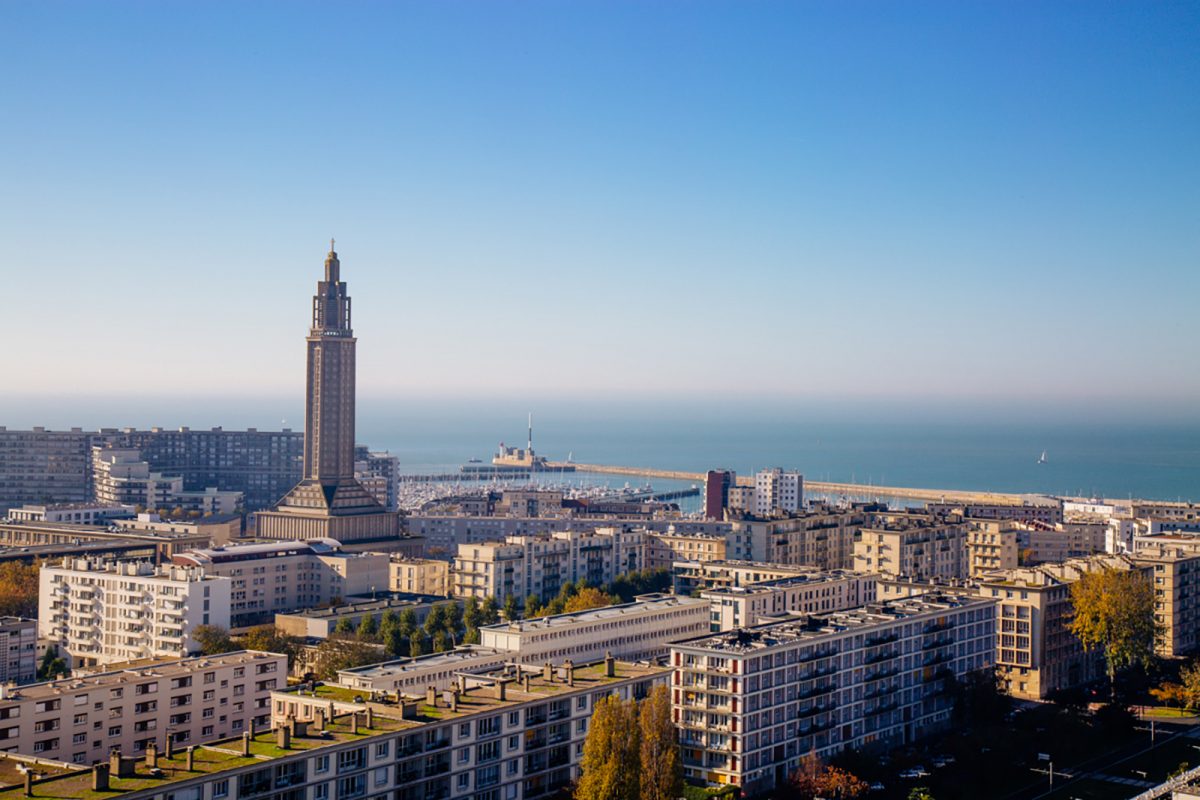
Restaurants and accommodation
For eating out in Le Havre we recommend Les Enfants Sages. This restaurant is set up in a former school, and there we had superb veal cutlets! There’s an excellent Normandy cuisine on offer, and you get a wonderful view of the setting sun from their garden. And if you don’t opt for a full meal, there’s a tearoom and bar with a delicious range of pastries and cakes.
After our happy day, we appreciated our stay at the Hôtel Vent d’Ouest, with its quirky bedrooms (ours was in the style of a Swiss chalet in the mountains) and fantastic spa – great for tired feet. The hotel also has a fine view of St Joseph’s Church – who could ask for more?
A city centre hotel with a view of St joseph’s Church – Who could ask for more?
Useful information
Le Havre Etretat Tourist Office
186 boulevard Clemenceau, 76600 Le Havre
lehavre-etretat-tourisme.com/en
